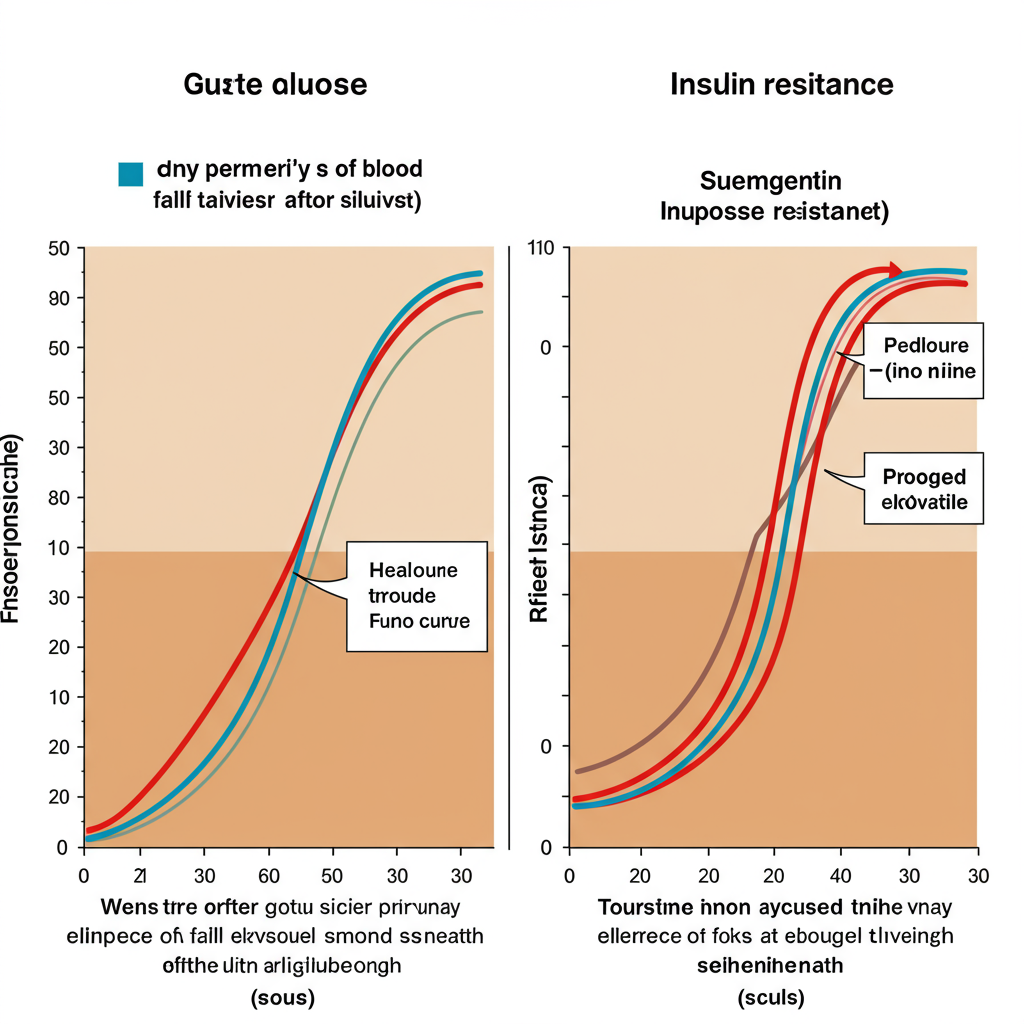The Vinegar Effect: A Simple, Science-Backed Approach to Blood Sugar Control
In our endless quest for optimal metabolic health, we often overlook simple solutions while chasing complex interventions. Today, I want to discuss what might be the most accessible tool in your blood sugar management arsenal - something likely sitting in your pantry right now: vinegar. This humble ingredient shows remarkable promise for blood glucose control, and the science behind it is both fascinating and compelling.
The Blood Sugar Problem
Before diving into vinegar's benefits, let's remind ourselves why blood sugar control matters. When we consume carbohydrates, our blood glucose levels rise. In metabolically healthy individuals, insulin efficiently shuttles this glucose into cells, returning blood sugar to baseline relatively quickly. However, in those with insulin resistance, prediabetes, or diabetes, this process becomes dysfunctional, leading to prolonged elevated blood glucose levels.
These glucose excursions aren't just numbers on a continuous glucose monitor (CGM). They drive inflammation, glycation of proteins, oxidative stress, and over time, contribute to the constellation of issues we're trying to avoid: cardiovascular disease, neuropathy, retinopathy, and cognitive decline. Blunting these glucose spikes is therefore a cornerstone strategy for metabolic health.

How Vinegar Works Its Magic
The primary active component in vinegar is acetic acid, which appears to influence glucose metabolism through several mechanisms:
-
Delayed Gastric Emptying: Vinegar slows the rate at which food leaves your stomach and enters your small intestine. This creates a more gradual absorption of carbohydrates, preventing sharp blood sugar spikes.
-
Enhanced Glucose Uptake: Research suggests acetic acid improves insulin sensitivity in muscle tissue, helping cells more efficiently take up glucose from the bloodstream.
-
Suppressed Carbohydrate Digestion: Acetic acid partially inhibits disaccharidase activity - enzymes that break down complex carbohydrates into simple sugars - thereby slowing carbohydrate digestion.
-
Activation of AMPK: Vinegar appears to activate AMP-activated protein kinase (AMPK), a metabolic master switch that improves insulin sensitivity and fatty acid oxidation.
The cumulative effect? Studies consistently show that consuming vinegar before or with carbohydrate-containing meals can reduce postprandial (after-meal) glucose responses by 20-40% - a significant impact for such a simple intervention.

Practical Implementation: How to Make Vinegar Work for You
Incorporating vinegar into your routine doesn't require dramatic lifestyle changes. Here are some evidence-based strategies:
Timing and Dosage: Research indicates that 1-2 tablespoons (15-30ml) of vinegar, taken just before or with meals containing carbohydrates, produces the optimal effect. The glucose-lowering impact appears dose-dependent, with greater quantities (up to a point) having larger effects.
Types of Vinegar: While apple cider vinegar gets most of the attention, studies show that the acetic acid content is what matters most. This means white vinegar, red wine vinegar, and other varieties can be similarly effective. However, apple cider vinegar does contain additional beneficial compounds like polyphenols.
Consumption Methods:
- Mix with water (1 tablespoon in 8oz) and drink before meals
- Use in salad dressings for carb-containing meals
- Add to cooking when appropriate
- For those who dislike the taste, diluting well or considering vinegar capsules are options (though I prefer whole food approaches)

Consistency: As with many metabolic interventions, consistency is key. Make vinegar a regular pre-meal habit, particularly before your higher-carbohydrate meals.
Considerations: Undiluted vinegar can erode tooth enamel and irritate the esophagus, so always dilute it. People with certain medical conditions, particularly those affecting the stomach or esophagus, should consult healthcare providers before implementing this strategy.
The Bigger Picture
While vinegar offers an impressive acute effect on glucose response, we should view it as one tool in our comprehensive approach to metabolic health. It doesn't replace foundational interventions like proper nutrition, regular physical activity, adequate sleep, and stress management.
I find vinegar particularly valuable as a "metabolic safety net" - especially useful when consuming meals higher in carbohydrates or when dining out where you have less control over meal composition. It's a simple, accessible way to mitigate the damage from occasional higher-carb meals.
Remember, the goal isn't perfect blood sugar - it's long-term metabolic health. Vinegar offers us an evidence-based, accessible tool to help maintain metabolic flexibility and reduce glycemic variability - key components of that long-term health.
As with all interventions, the response is individual. I encourage you to try the vinegar approach while monitoring your own glucose response (ideally with a CGM if available), to determine how it works for your unique physiology.
References:
Johnston CS, Gaas CA. Vinegar: medicinal uses and antiglycemic effect. MedGenMed. 2006;8(2):61.
Mitrou P, Petsiou E, Papakonstantinou E, et al. Vinegar Consumption Increases Insulin-Stimulated Glucose Uptake by the Forearm Muscle in Humans with Type 2 Diabetes. J Diabetes Res. 2015;2015:175204.






